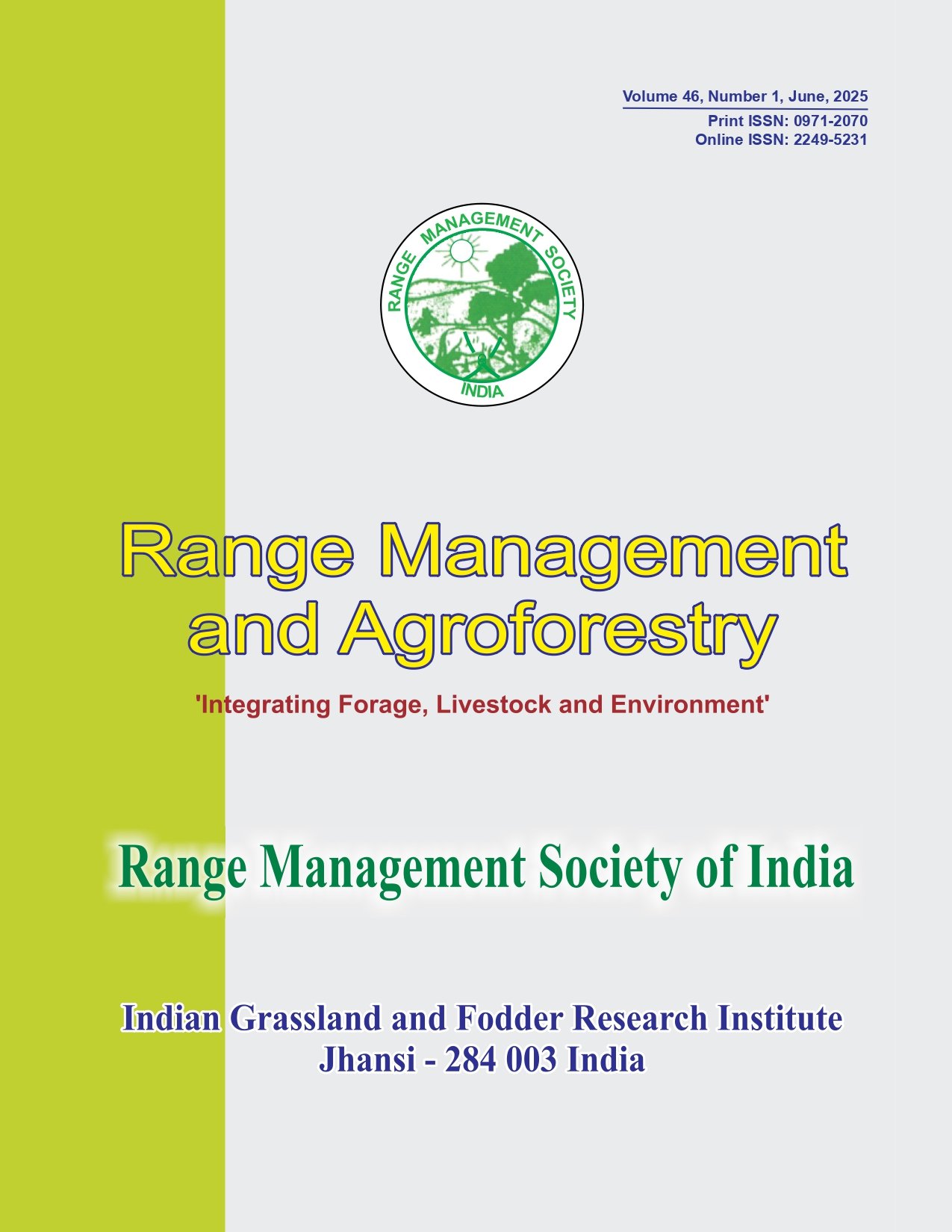Knowledge level of fodder cultivating farmers about berseem production technology
Keywords:
Berseem, Fodder, Knowledge level, Path analysisAbstract
Berseem or Egyptian clover (Trifolium alexandrinum L.) is an annual winter season fodder legume widely adapted in central and Northwest India. One of the ways to augment the huge forage deficit in the country is knowledge building of the farmers about the advantages and scientific production practices of growing forages. Present paper reports the knowledge level of 120 berseem growers in Lalitpur district of Bundelkhand region of Uttar Pradesh regarding berseem production technology. A ‘knowledge index’ consisting of 10 dimensions was prepared to measure the knowledge level. The study revealed the poor knowledge about high yielding varieties, land preparation and bio-fertilizer, while majority of them had more knowledge about critical stages of irrigation. The socioeconomic, communication and psychological factors had significant positive relationship with knowledge level. Farmer’s exposure, attitude towards berseem production technology along with some other factors had direct and indirect effect on knowledge of berseem growers.




